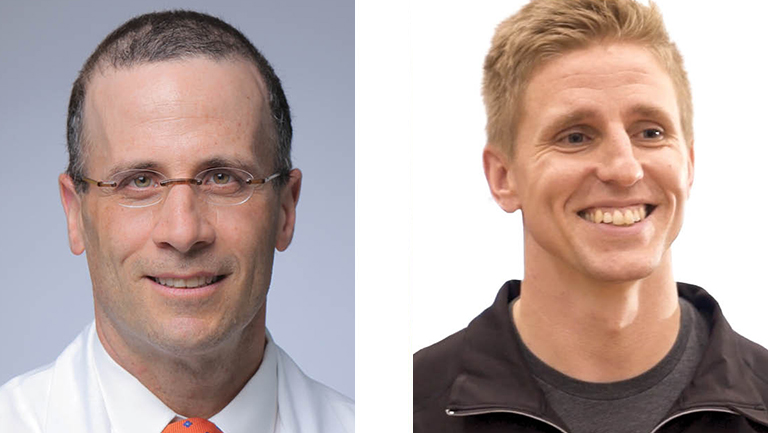Life Time has partnered with the sports health experts at NYU Langone Health to provide insights into the common health issues that have the potential to prevent you from moving freely and functioning at your best.
Meet the Experts

- Dennis Cardone, DO, Chief of Primary Care Sports Medicine at NYU Langone
- Danny King, Master Trainer, Life Time
Q: This past year and a half has been, well, a lot, and my upper back, shoulders, and neck are really tight and achy. What should I do?
A: The stress of living through a pandemic has affected our physical bodies along with everything else. One area of our bodies that bears the burden of stress — not to mention the consequences of our more sedentary lifestyle — is the trapezius muscle in the upper and mid-back.
“Trapezius issues are among the most common problems that I see,” says Dr. Cardone, DO, a sports medicine specialist at NYU Langone. He notes that neck pain, tenderness along the upper ridge of the shoulders, and tension headaches typically have a trapezius component.
The trapezius muscle, or “trap,” is a large muscle that attaches at the base of the skull and extends both downward to the lower thoracic spine and laterally along the top of the shoulder blades. The traps are engaged in a variety of movements including upper-body rotation, lifting, pulling, and maintaining proper posture.
“It’s basically three muscles in one,” explains Danny King, master trainer at Life Time. “The upper trap, mid-trap, and lower trap do three pretty distinct things.”
One job of the upper trapezius is to rotate the shoulder blades upward and away from the body. The lower traps’ job is to bring the shoulder blades down and against the back. Most people are upper-trap dominant, and the imbalance causes problems.
“The ability to activate the lower traps to glide the shoulders back down is super-important for good posture,” says King, explaining that posture both affects and is affected by our ability to engage the lower traps.
Whether from habit or poor ergonomics, many of us slump when we sit. As our spine rolls forward, the mid- and lower trapezius overstretch and weaken. But even those of us who work out can have issues with our trapezius.
“In the gym we tend to pay more attention to pecs and biceps, and less to strengthening our backs,” observes Dr. Cardone.
Being active and aware of posture are key to alleviating discomfort. For those with sedentary jobs, King and Dr. Cardone recommend getting up every 20 minutes, moving from sitting to standing, and shifting weight often.
In terms of exercise, King recommends focusing on restoring mobility and extension in the upper back, and then building strength in the mid- and lower trapezius.
Mobility: Sit upright in a chair with a rolled-up towel squeezed between your knees to engage your core and stabilize your pelvis. Place your right hand on your left shoulder and your left hand on your right shoulder, elbows pointing forward. On an exhalation, rotate as far as you can in one direction and hold, then repeat the action in the other direction. Perform 3 to 5 reps each side.
Extension: Lie on your belly with your arms stretched forward on the floor ahead of you, thumbs up toward the ceiling. On an exhalation, lift your rib cage off the floor while drawing your shoulders back and down, squeezing your shoulder blades together. Perform 8 to 12 reps, then repeat the cycle with your arms wider apart in a “Y”, and then with your arms out in a “T”, keeping thumbs pointed upward.
Strength: With your awareness of the mid- and lower trapezius primed, practice more complex movement patterns such as rows, pullups, or pulldowns, being careful not to let the upper trapezius do the brunt of the work.
The Sports Health experts at NYU Langone have the multi-specialty expertise to provide coordinated, comprehensive care for all types of athletes. As an official healthcare partner, Life Time is able to offer its members exclusive concierge access to NYU Langone’s world-class orthopedic specialists and performance experts, who can help you meet your fitness goals. To schedule an in-person appointment or video visit with a Sports Health expert, visit nyulangone.org/lifetime.

